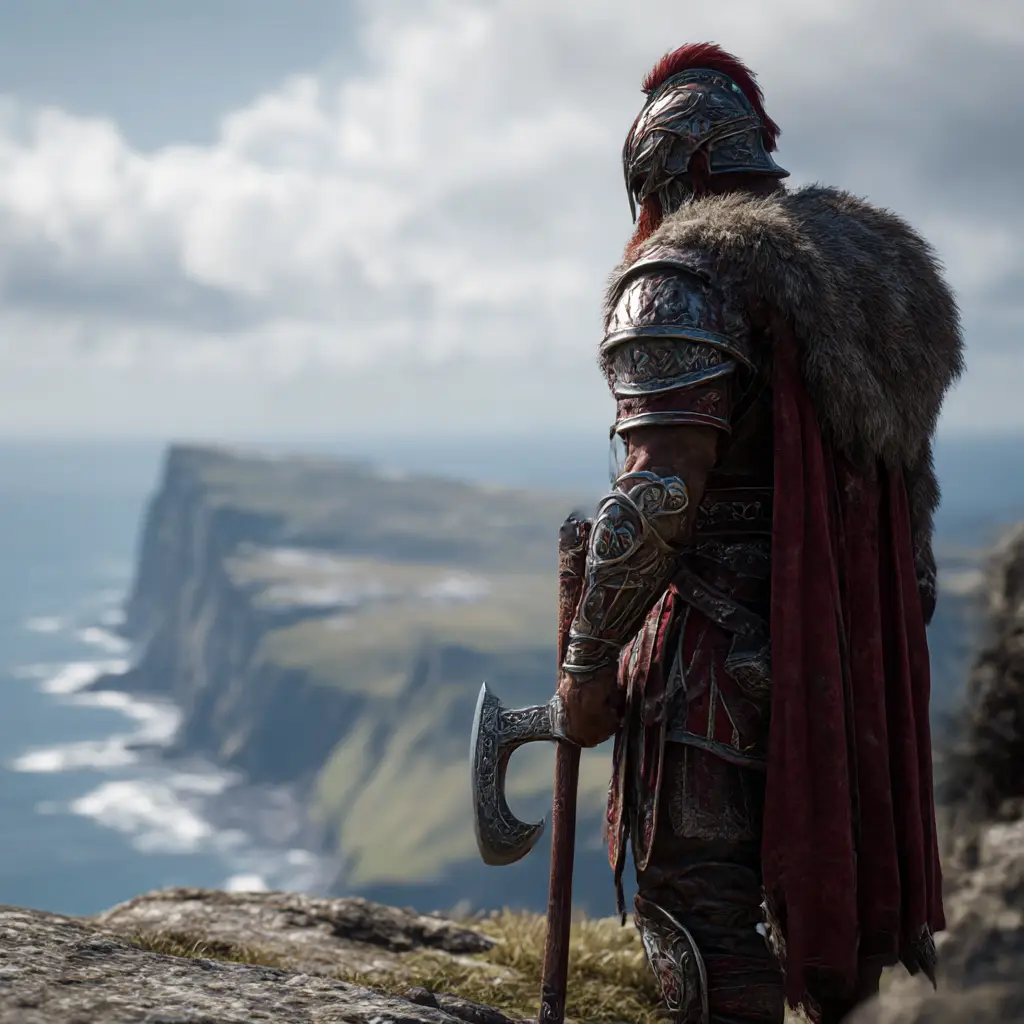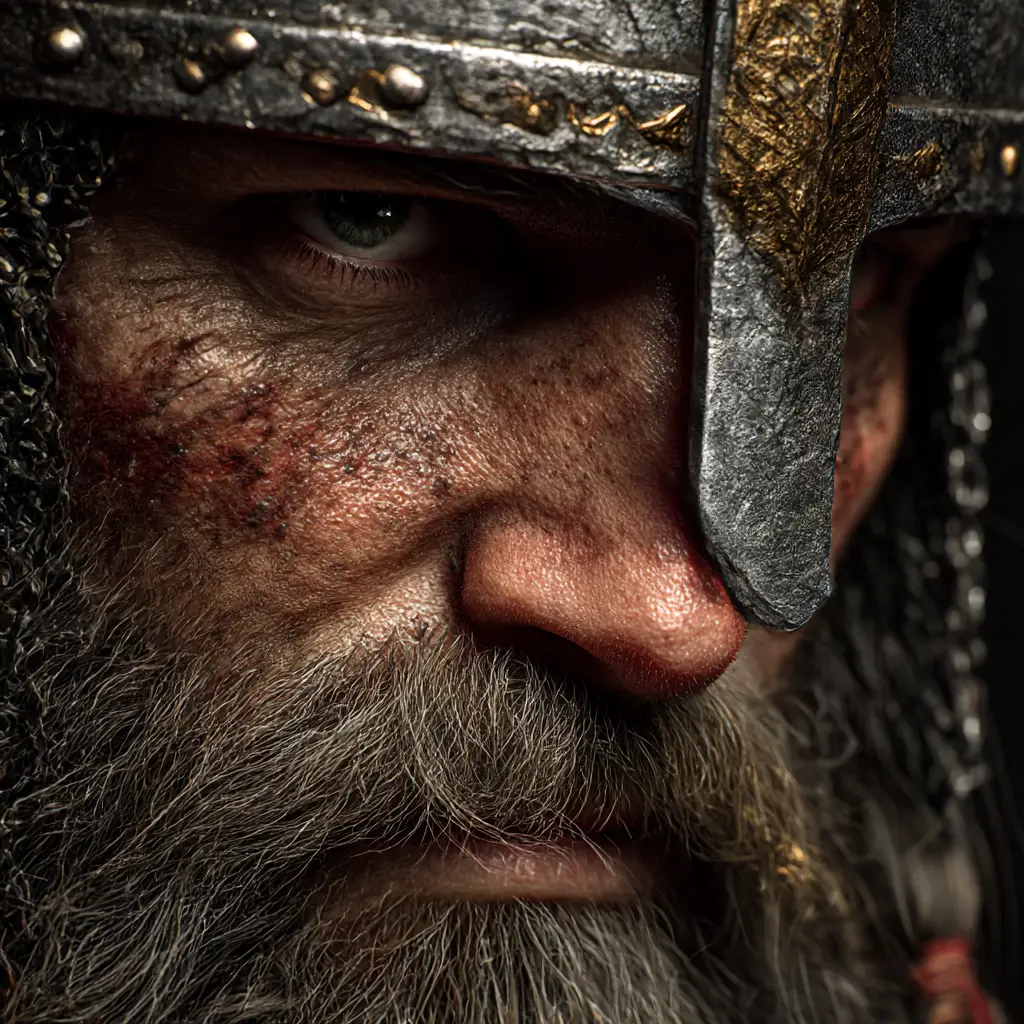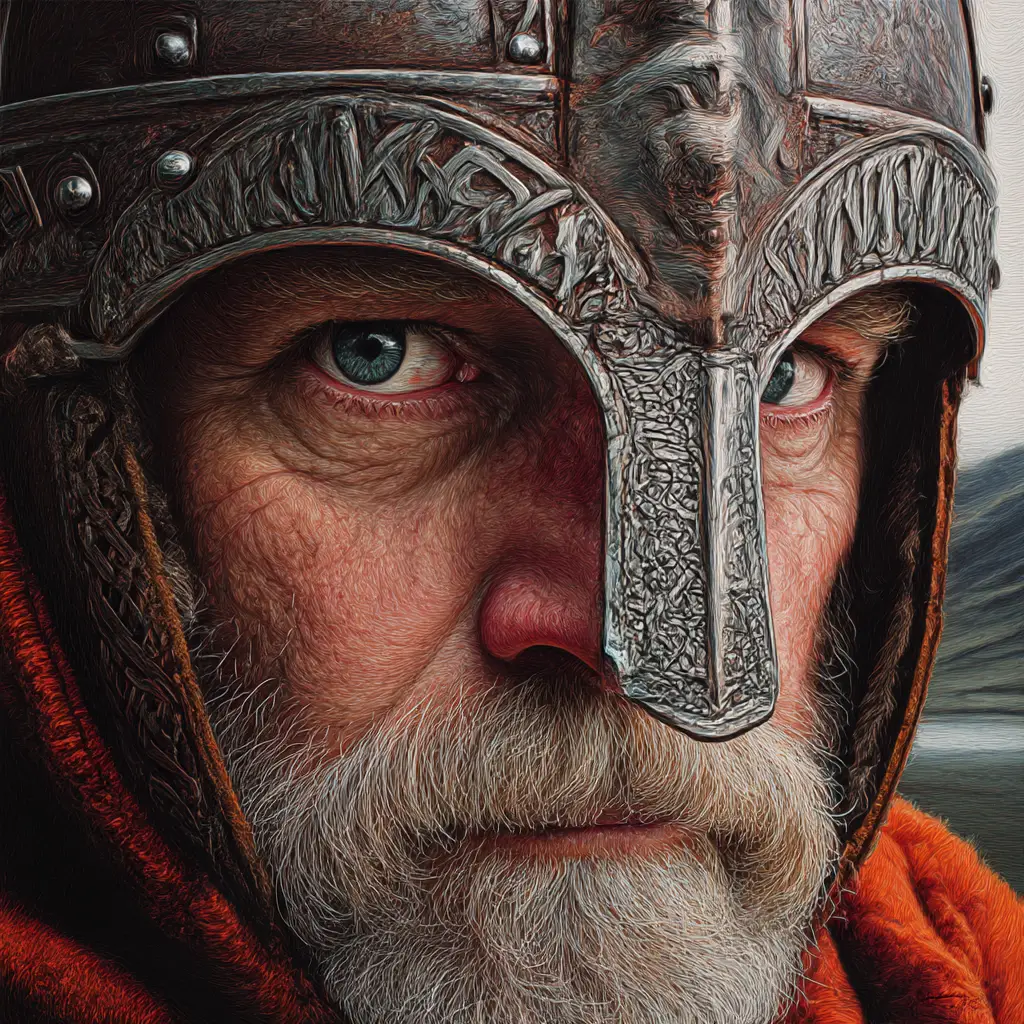The Orkneyinga Saga, written in the early 13th century, is one of the most important sources for the history of the Orkney Islands during the Viking Age. It chronicles the arrival of Norse settlers, the establishment of the earldom, and the often turbulent rule of the early Orkney earls. Among the first and most notable was Sigurd the Mighty, a warrior whose ambition and ferocity helped shape the islands’ Norse identity.
Sigurd the Mighty (Sigurd Eysteinsson)
Sigurd, known as Sigurd the Mighty, was the second Earl of Orkney and one of the most formidable figures of the early Viking period in Scotland. He was the brother of Rognvald Eysteinsson, the Møre Earl from Norway, who was granted the Orkney and Shetland Islands by King Harald Fairhair. Rognvald passed the earldom to Sigurd as compensation for the loss of his son during Harald’s western campaigns.
Sigurd established Norse control over the Northern Isles and extended his influence into northern Scotland, launching raids and demanding tribute from local Pictish rulers. His most famous encounter was with Máel Brigte the Bucktoothed, a Scottish chieftain. After defeating and beheading his enemy, Sigurd tied Máel Brigte’s head to his saddle as a trophy. Legend says that one of the chieftain’s teeth cut Sigurd’s leg as he rode home, and the wound became infected, leading to his death—a grim reminder of the fate that often awaited even the most powerful warriors.
Torstein the Red
Sigurd’s power was continued by his son, Torstein the Red, who ruled in alliance with the Scots through his mother, a noblewoman from Caithness. Torstein expanded Norse control deep into Scotland, reportedly holding territory as far south as Moray. His campaigns brought him great renown, but also conflict with both Norse and Scottish forces. He was eventually betrayed and killed, marking another violent turn in the saga of the Orkney earls.
Hálfdan Long-Legs and the Rise of Later Earls
After Torstein’s death, the Orkney earldom was contested by various Norse claimants, including Hálfdan Long-Legs, a son of King Harald Fairhair. The struggle for power was marked by feuds, shifting loyalties, and alliances between Norwegian royalty and local jarls. Control of the islands passed through several hands before settling with Sigurd’s descendants once again.
Earl Guthorm and the Consolidation of Power
Following these early conflicts, Earl Guthorm, said to be Sigurd’s nephew, ruled briefly before dying without an heir. His death opened the way for new figures, including Earl Rognvald’s descendants, to take control. The Norse earldom continued to evolve, intertwining with the politics of both Norway and Scotland, laying the foundations for the later powerful earls such as Thorfinn the Mighty and Rognvald Kali Kolsson.
Legacy of the Early Earls
The early earls of Orkney were more than warlords—they were founders of a Norse dynasty that blended Scandinavian and Scottish cultures. Through conquest, settlement, and intermarriage, they helped shape the identity of the Northern Isles, leaving traces that can still be seen in the place names, archaeology, and folklore of Orkney today.
The Orkneyinga Saga preserves their deeds in a mix of history and legend, portraying men driven by ambition, courage, and fate. Their stories form the foundation of Orkney’s Viking heritage and remain an enduring part of Scotland’s early medieval past.


